
Greece Post 5 - The Acropolis: A Revered Space for 16,000 Years
Athens has grown into a densely-populated city sprawled across a coastal plain but one thing has not changed in 16,000 years: the reverence for the space at the top of Acropolis Hill. The first recorded settlements on Acropolis Hill were palaces built by Mycenaean Kings in the 14th century B.C.E. Yes, 16,000 years ago!
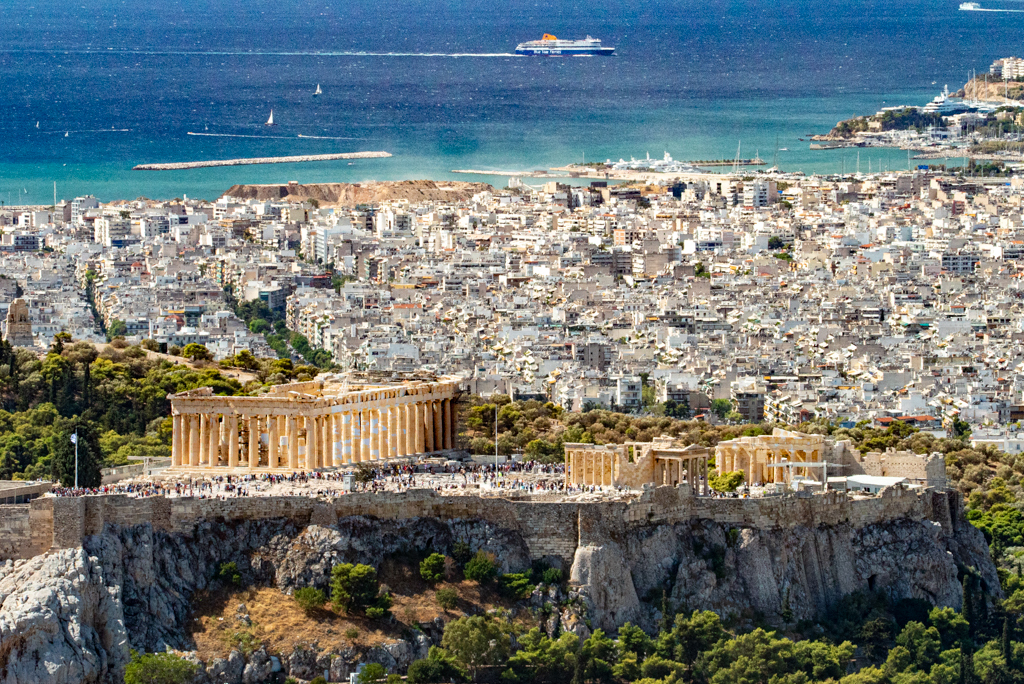
Through the centuries, structures as varied as palaces, fortresses, temples, mosques, and churches were built on this dramatic hill. The first stone was laid for the site as we now know it in 447 B.C.E. under the direction of Pericles of Athens. The purpose of the complex of buildings on Acropolis Hill was to honor the goddess Athena and to proclaim the grandeur of the city. (I am no historian; more informed information can be found at ancient-greece.org.)
Today, people travel from around the world to see this still-special place. It is great to know that so many people care about history. (Hopefully that is the case, and they are not just coming here to get selfies at an iconic site; there was plenty of that going on.)
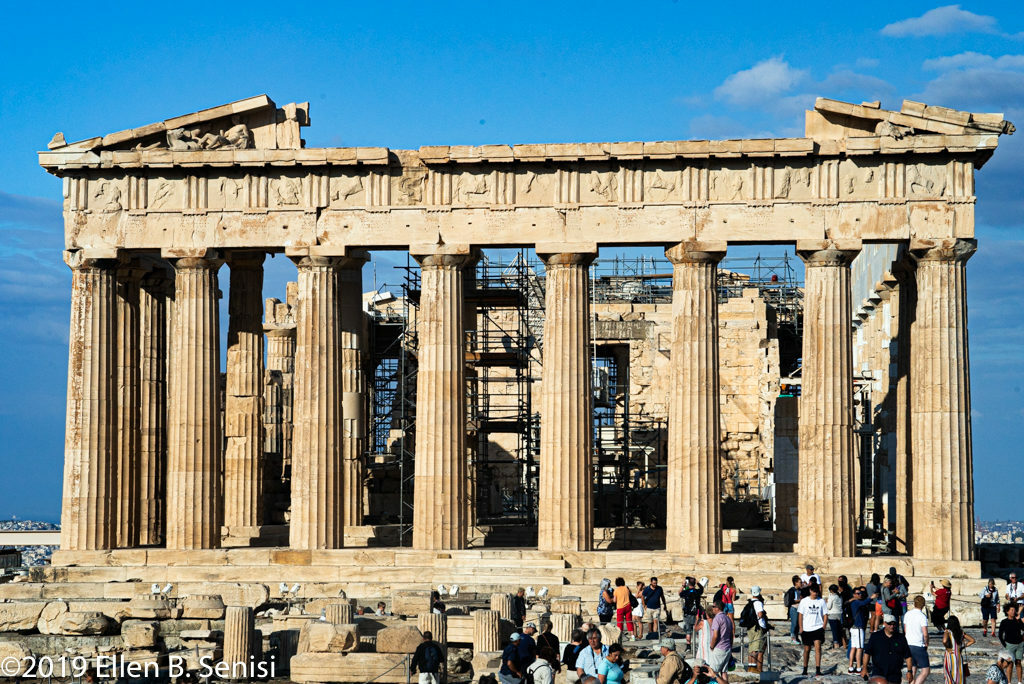
The Acropolis hovers high above the city so it’s a long climb. No, not crawling up that rock wall, but following winding stone and packed-dirt paths.
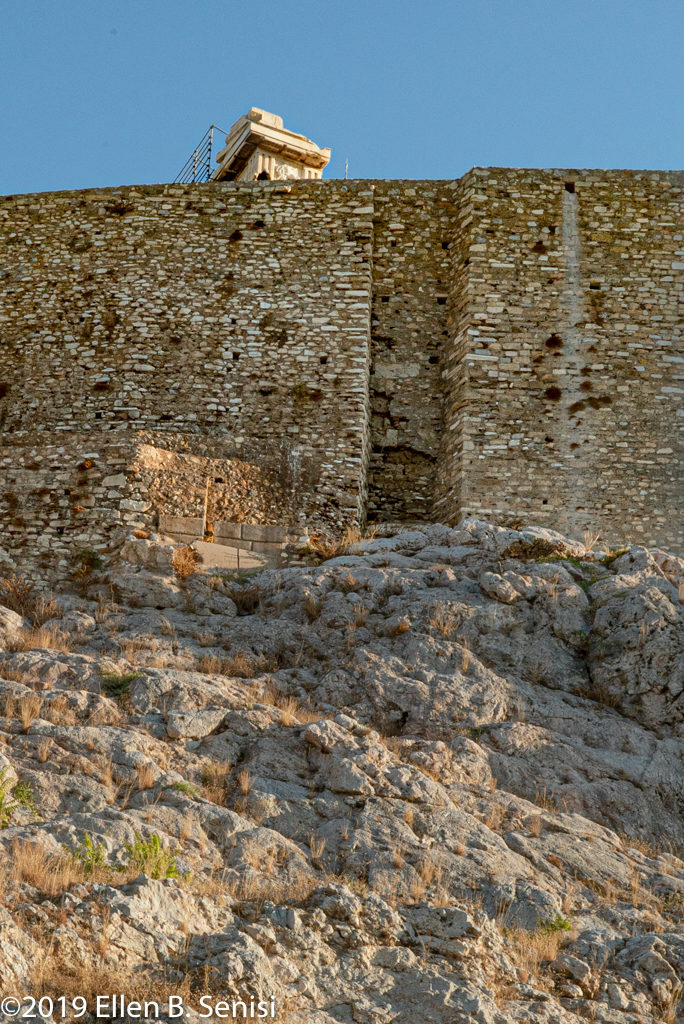
The Acropolis is a compound with a mix of the main buildings at the summit, including the Parthenon, but statues and other structures are found along the way to the top.
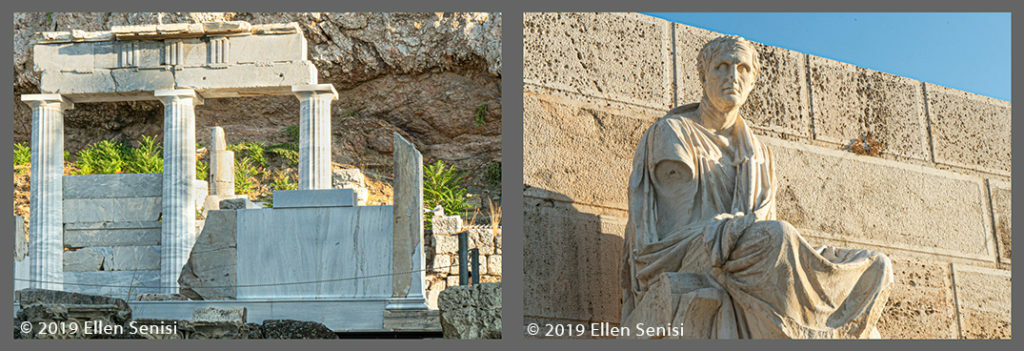
There were large, loose stone hunks from broken structures lying around. Restoration is ongoing, and most large blocks are marked with codes for putting them back together.
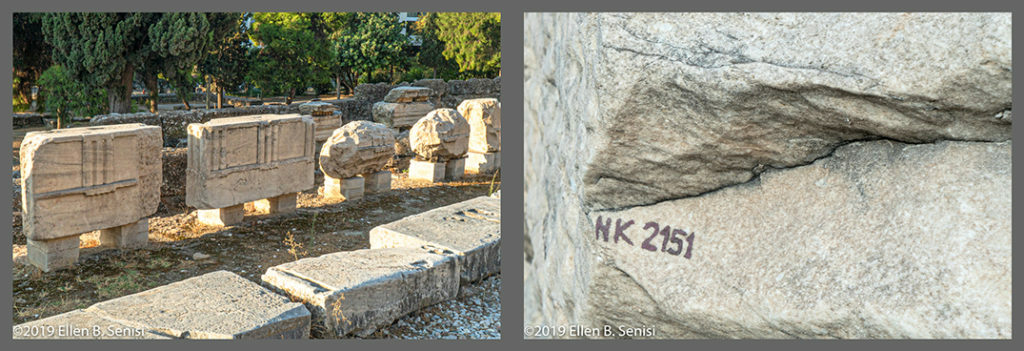
The most impressive site on the way up to the summit is the Odeon of Herodes Atticus. This theater is still in use, over 1,800 years after being built (161 C.E.). The original structure had a roof, which was destroyed in 267 C.E., but today it is an open-air theater. It would be a thrill to watch a production here on a summer evening with a nighttime view of Athens in the background.
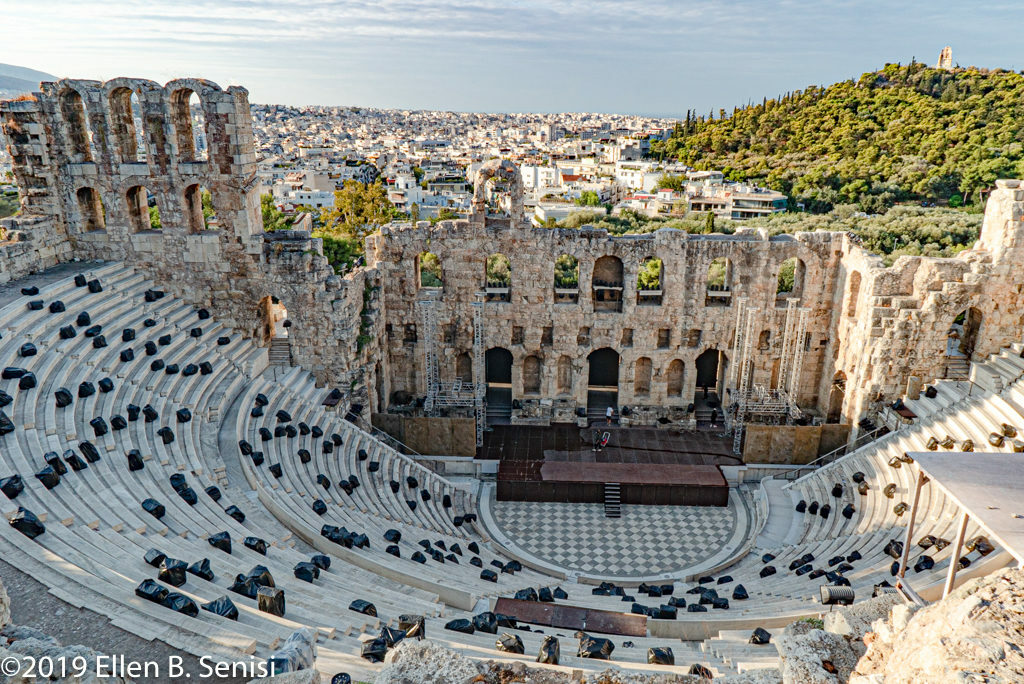
The higher the climb, the bigger the views of the city of Athens! This view of the Temple of Athena Nike lets you know you’re getting close –
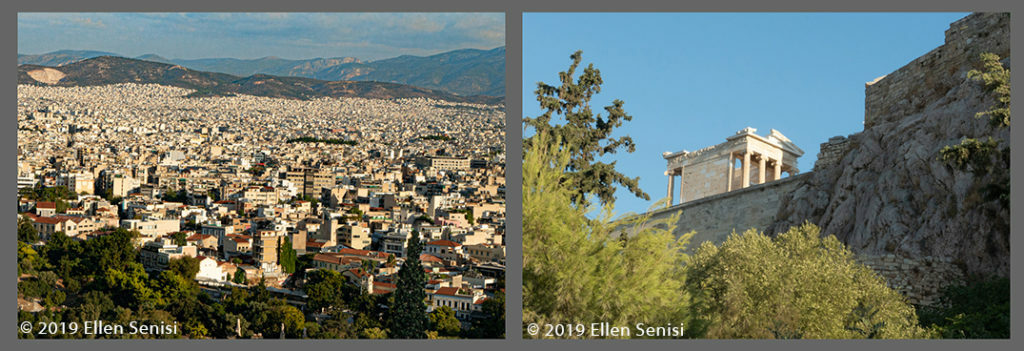
and then you reach the top! The Parthenon rises majestically above the other buildings on the site.
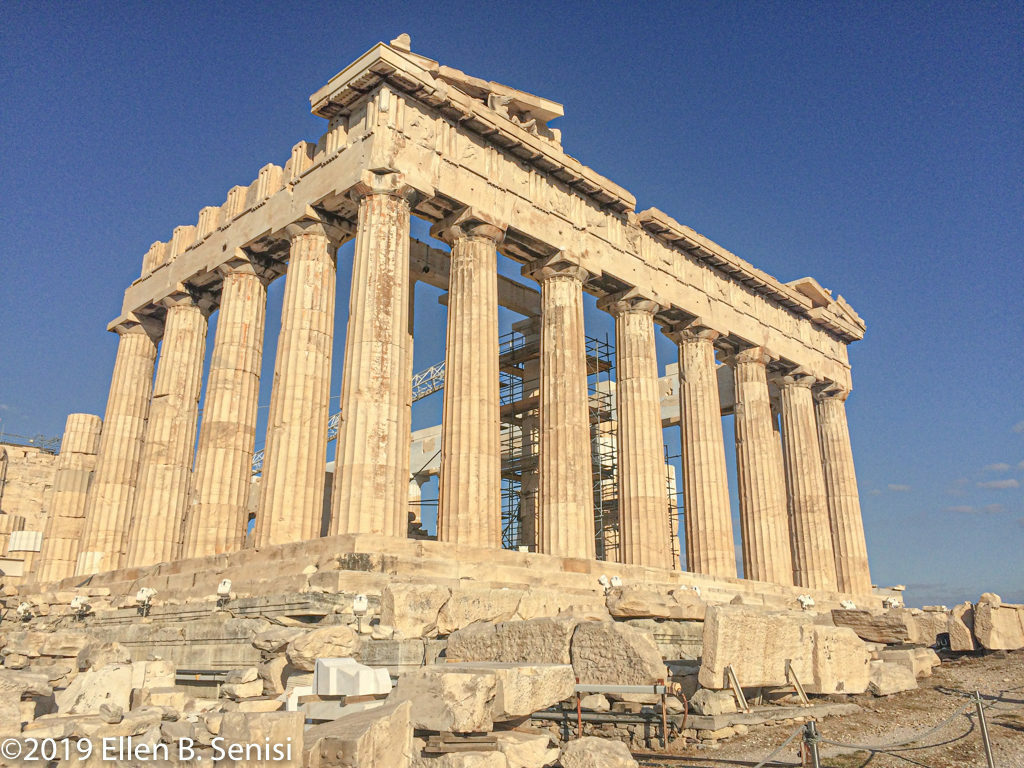
In addition to the grandeur, artistic details with historical meanings are crafted into the Parthenon.
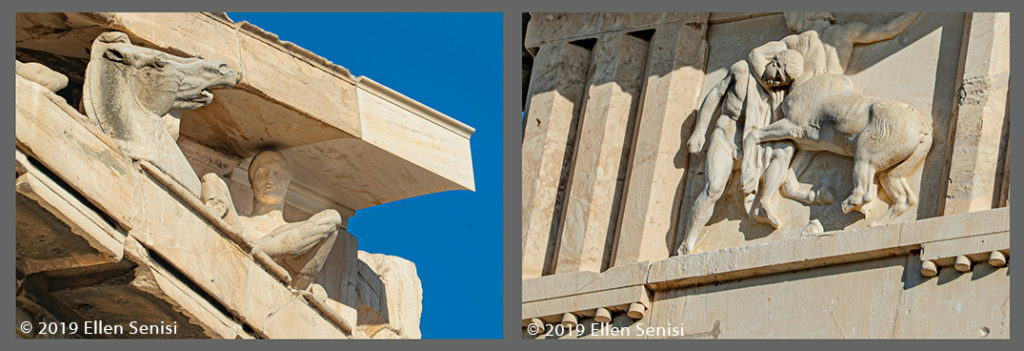
Many of the structures on this site are endangered for a variety of reasons. The plateau was originally leveled by adding artificial fill which does not provide solid-enough support for the buildings and crowds of tourists. Other contributory factors to the site’s deterioration include improper restoration efforts, earthquakes, wars and, recently, pollution and acid rain. There are big plans and massive efforts in progress to maintain and restore the structural and artistic integrity of this historic site.
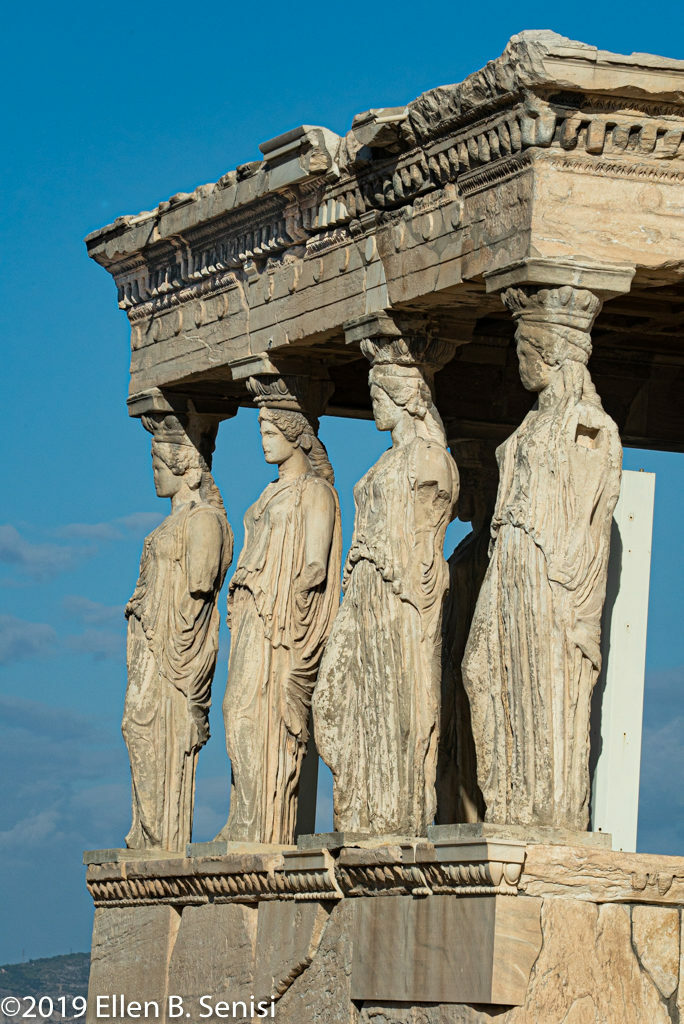
The views from the Acropolis Hill are fabulous! Athens and mountains are on one side,

and Athens, sea, and sky on other side.

The Acropolis hangs, literally, over the landscape of Athens. It’s not visible everywhere so at street level you can forget about it until you suddenly look up and see it hovering eerily above.

The Unesco World Heritage website says of the Acropolis:
“The Athenian Acropolis is the supreme expression of the adaptation of architecture to a natural site. This grand composition of perfectly balanced massive structures creates a monumental landscape of unique beauty, consisting of a complete series of architectural masterpieces of the 5th century BC.”

Despite the ravages of time, war, climate, environment, and early flawed efforts of restoration, the vision, symbolism, and labor of the early Greeks endures – battered but still remarkably impressive and iconic.
